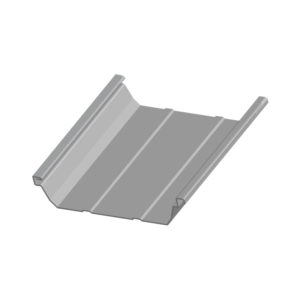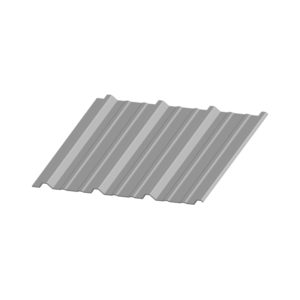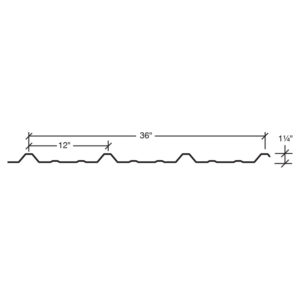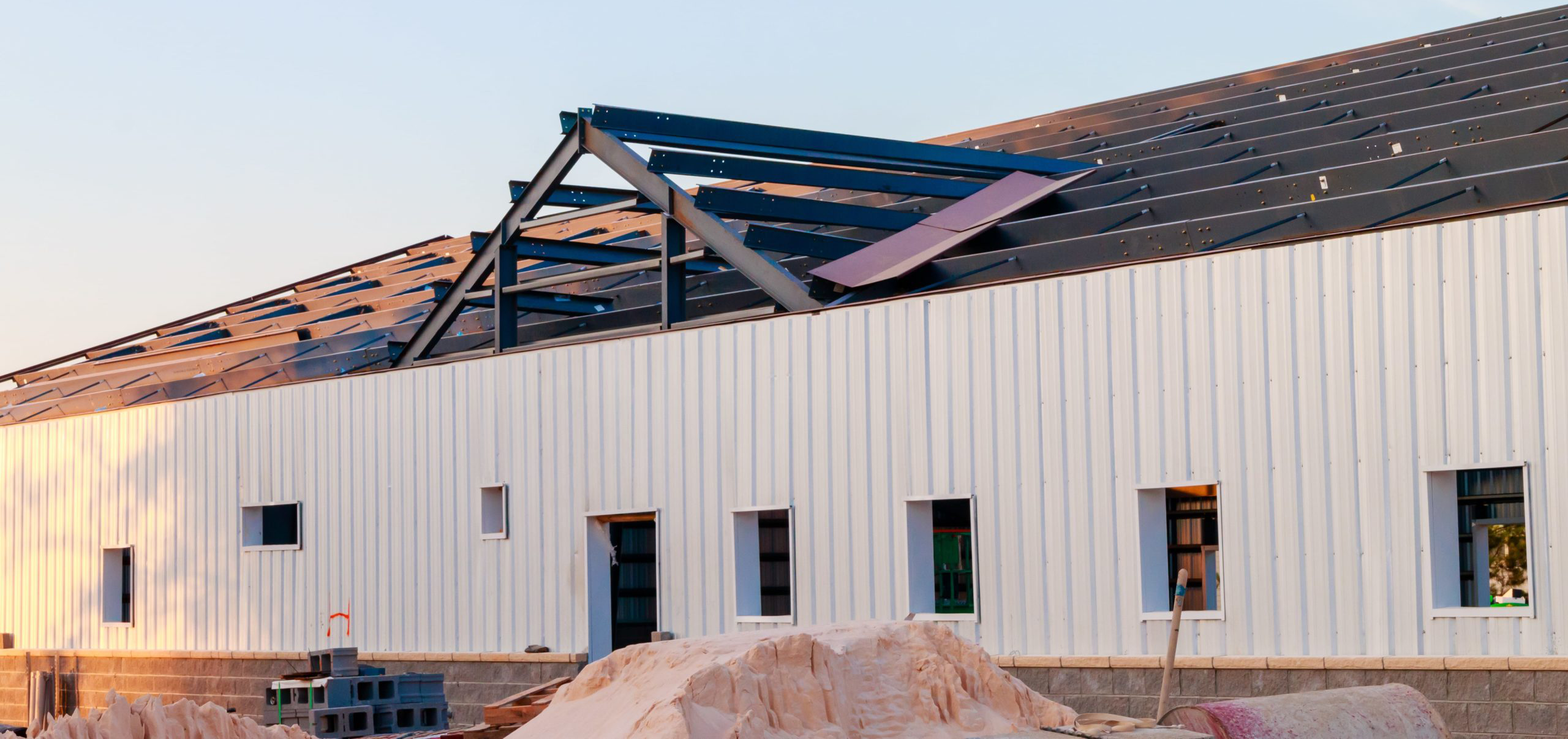
Anatomy of a Steel Building: Standing Seam and Screw Down Roofing Systems.
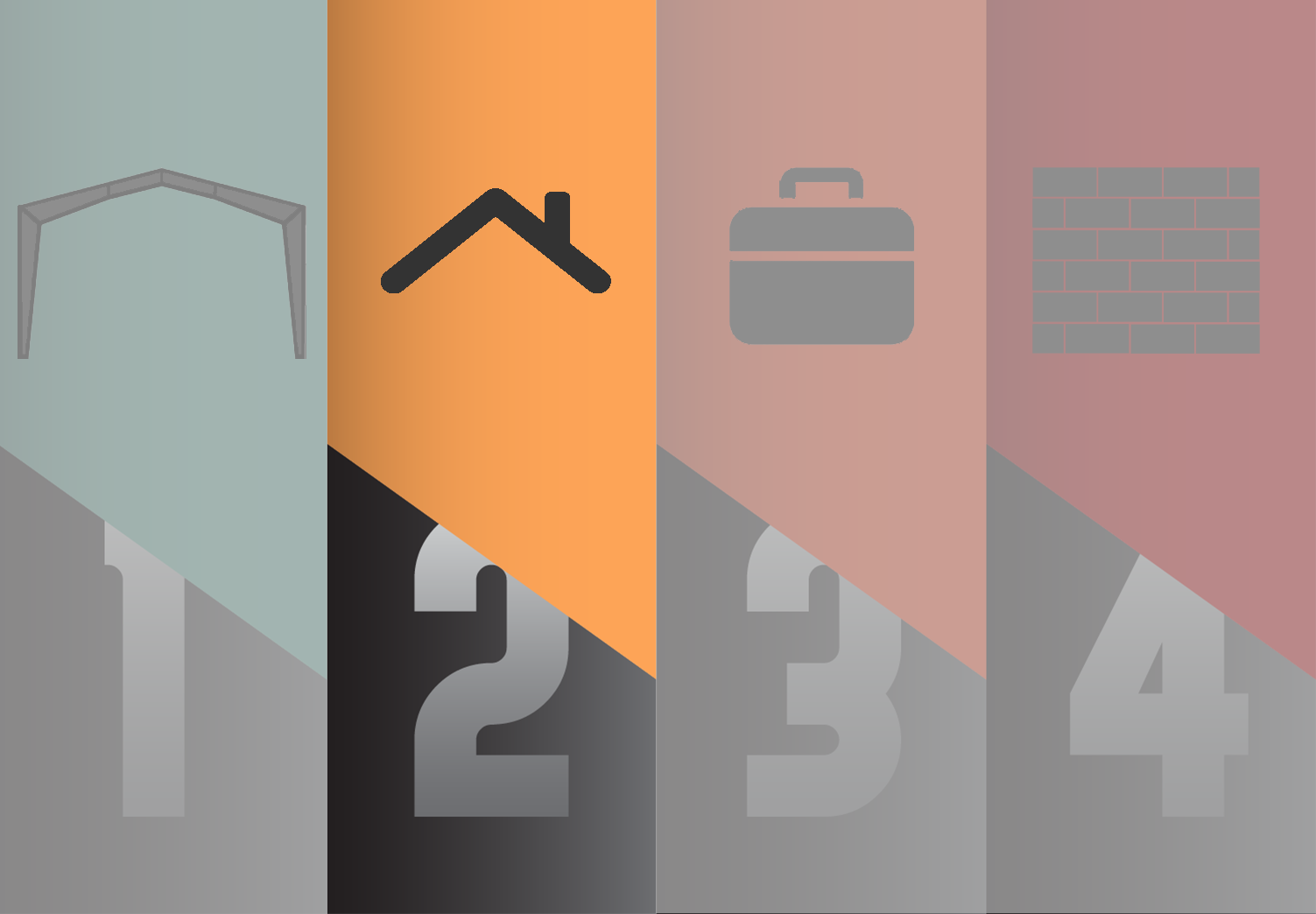
Anatomy of a Steel Building: Standing Seam and Screw Down Roofing Systems.
Last week, in our 4-part blog series titled, The Anatomy of a Steel Building: Rigid Frames, Purlins & Girts, we discussed the different types of first and secondary support systems in a prefab steel building. We suggest going back and reading that here. This week’s topic of discussion is two standard types of roofing systems, the differences between them, and the pros and cons for both.
Standing Seam:
The standing seam panel is amongst the most versatile, durable, and maintenance-free types of roofing system. Standing seam panels are installed using a clip and interlock design which conceals fasteners and prevents water from leaking in. See figure below of a typical detail for a double lock panel.
Please note this is just one of many types of standing seam panels. Check with the steel structure company you are working with to see other available options.
Double Lock Standing Seam Panel
Pros:
- The panels for standing seam systems are usually 24-22-gauge Galvalume steel.
- Due to their concealed fasteners, the interlocking design of a standing seam panel keeps water out.
- Does not require routine maintenance.
- Is ideal when the need for large R-value insulation systems are needed.
Cons:
- Standing seam panels are typically more expensive to that of traditional screw down panels due to the thickness of the metal and the maintenance free interlocking design.
- The price for installation is usually higher.
- Special hand/powered seamers required for installation.
- Standing seam panels should be inspected more often in areas that have high-wind, although this should not be a problem.
Pop Quiz:
According to the blog post, Anatomy of a Steel Building: First and Secondary Support Systems
What component assists in bracing the structure and allows for roof panels to attach?
- Rigid Frame
- Girts
- Purlins
Leave your answer in the comment section.
Screw Down Roof:
Like most standing seam panels, screw down panels attached to a prefab steel building with fasteners. However, despite being made from the same material, the two are considerably different. As the name implies, the panels of a screw down roof are well, screwed down – leaving the fasteners exposed. The panels overlap each other almost in a layered like fashion while the fasteners attach the roof sheeting to the main structure and each other. (More details to come with specific information for unloading, storing and installing roof panels best practice) See figure below of a typical detail of a roof panel.
PBR Panel
Pros:
- Roof sheeting is usually less expensive to that of the standing seam panel.
- Save time and money on installation.
- Does not require additional tools to install.
Cons:
- Exposed fasteners on screw down roof.
- Easy to install, easier to install incorrectly. Please READ all installation/erection manuals that come with your building.
- Does not support large R-value insulation.
Make sure you understand your needs and the needs of the project before deciding which roof system to chose. Are you in a colder climate and require an uncompressed, high R-value insulation? Does your city have requirements as to which type of roof system you can use? Is money an issue? As always, please make sure you are communicating with your local permit/building departments and a project manager or coordinator you are working with from the prefabricated metal building company.
For more information about the Anatomy of a Steel Building, CLICK HERE or give us a call 888-783-3535
You can also Tweet us @coastalsteel
And don’t forget to subscribe, share, and comment!
LETS WORK TOGETHER ON YOUR DREAMS!
Are you ready to start your steel building journey? Request a quote today and speak to one of our experienced team members to set you up for success and make your vision a reality!
GET A QUOTE
